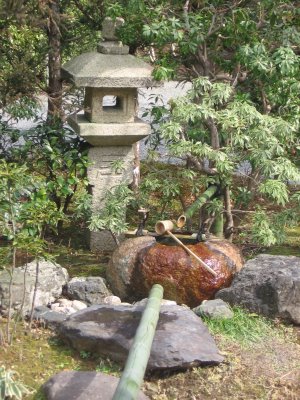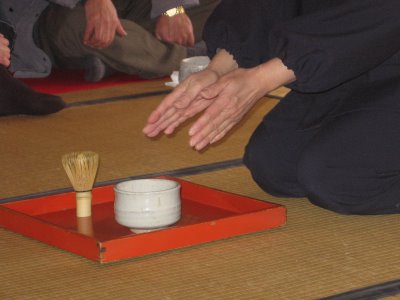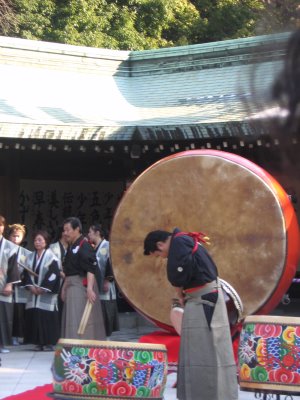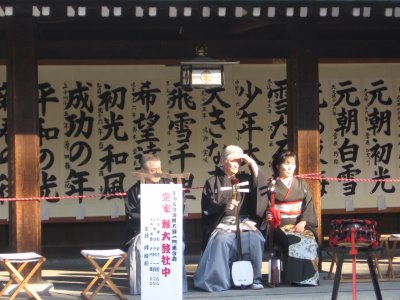The Temples and Shrines of Kamakura - Part 2
 The main shrine of Kamakura, Tsurugaoka Hachimangu, was built for worshipping the Emperor Ohjin, Himegami and the Empress Jingu. It is on a long thoroughfare with lots of little shops and food stands, as well as rows of cherry trees. Over two million people visit this shrine each year and in the spring and fall, there are horseback archery (yabusame) festivals on the grounds. There are two major shrines here: the junior shrine on the first level and the senior shrine that is approximately 100 steps above.
The main shrine of Kamakura, Tsurugaoka Hachimangu, was built for worshipping the Emperor Ohjin, Himegami and the Empress Jingu. It is on a long thoroughfare with lots of little shops and food stands, as well as rows of cherry trees. Over two million people visit this shrine each year and in the spring and fall, there are horseback archery (yabusame) festivals on the grounds. There are two major shrines here: the junior shrine on the first level and the senior shrine that is approximately 100 steps above.The favorite temple that I visited was Hasedera Temple, which features a 9-meter tall statue of Kannon with eleven faces, the largest wooden statue in Japan, as well as a small museum featuring wooden and earthenware statues of the goddess Kannon, complete with crystal eyes. From Hasedera, we could see the beaches of Kamakura as well as the small town of Hase. It was a beautiful place to visit.
Finally, we went to see the Daibutsu, the Great Buddha, the most celebrated landmark of Kamakura. I mentioned a little bit about the Daibutsu in my last post. Yoritomo Minamoto, the founder of the Kamakura Shogunate first saw a Buddha being erected in a neighboring prefecture and wanted to build a larger one in Kamakura. He died before his vision came to fruition. Later a tsunami destroyed the building that housed the Daibutsu and it has sat outside, battered by the elements for more than 700 years. Later on, the mostly copper statue was used as a homeless shelter and a refuge for drunken gamblers. The tradition continues as drunken tourists pose in front of the Daibutsu and pay 20 yen to squeeze inside.
























































